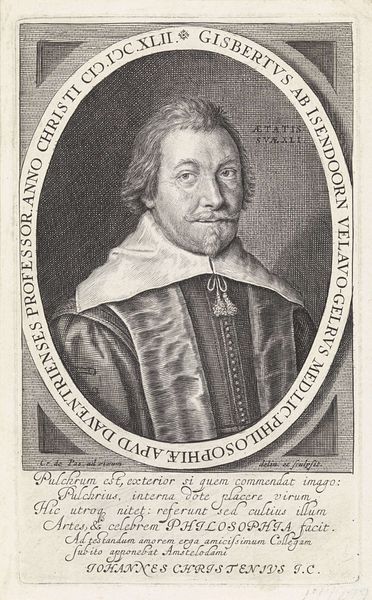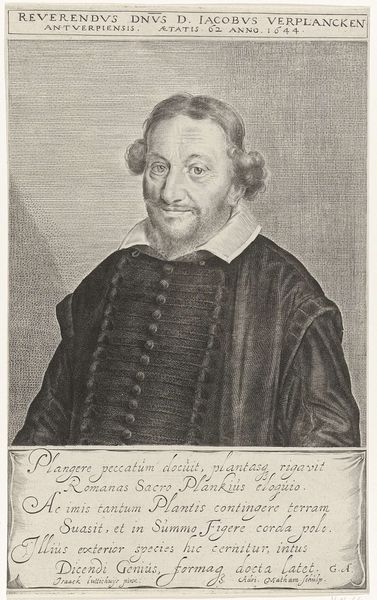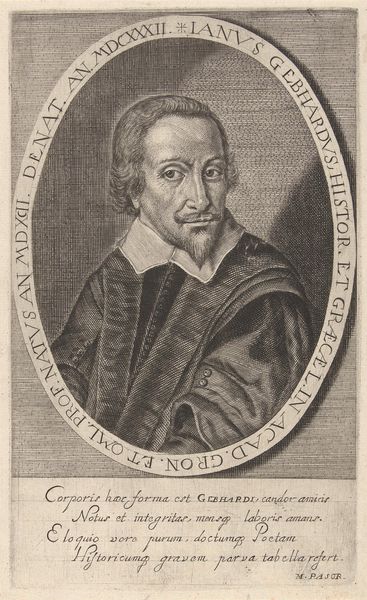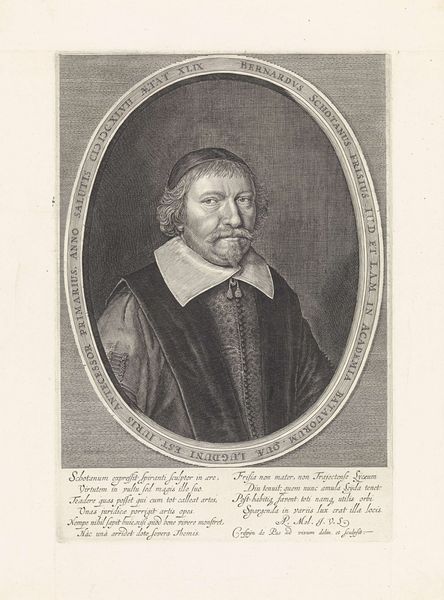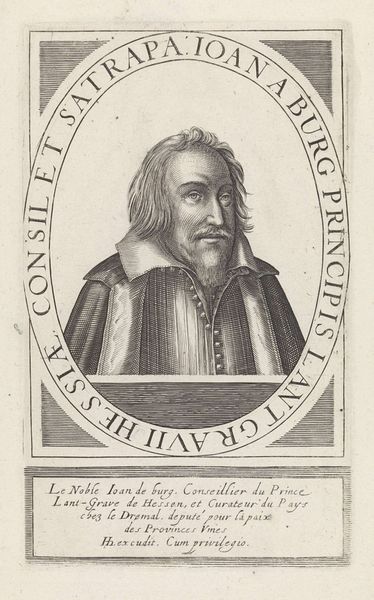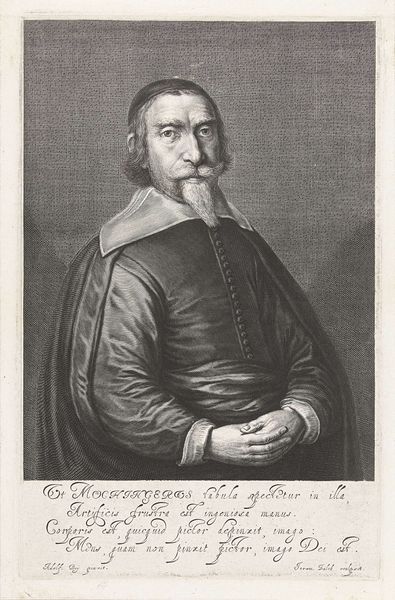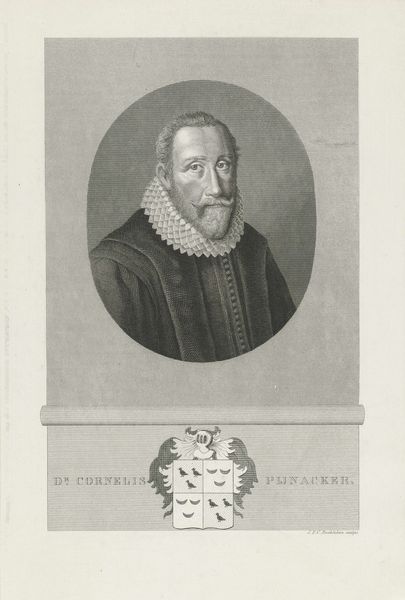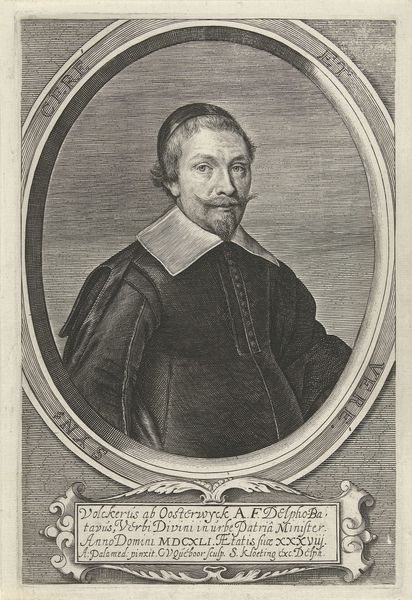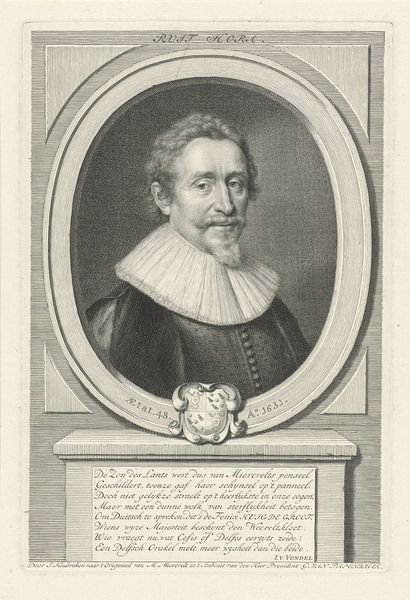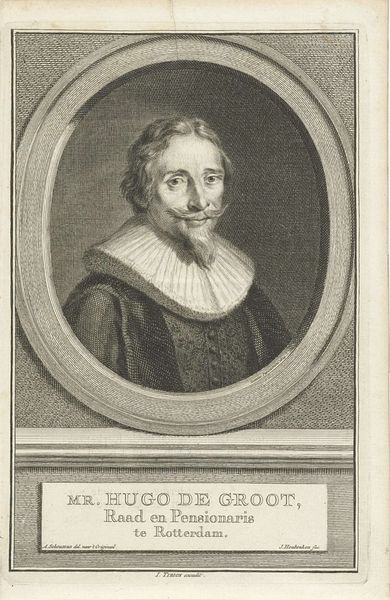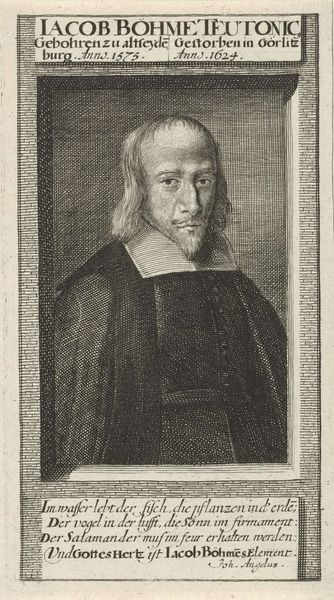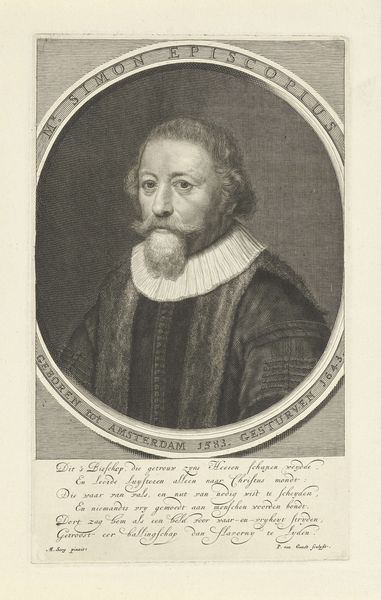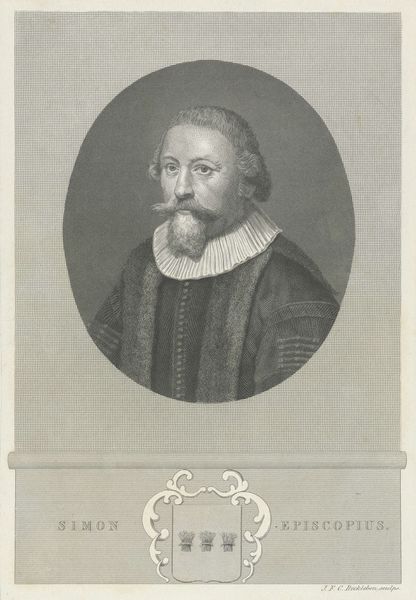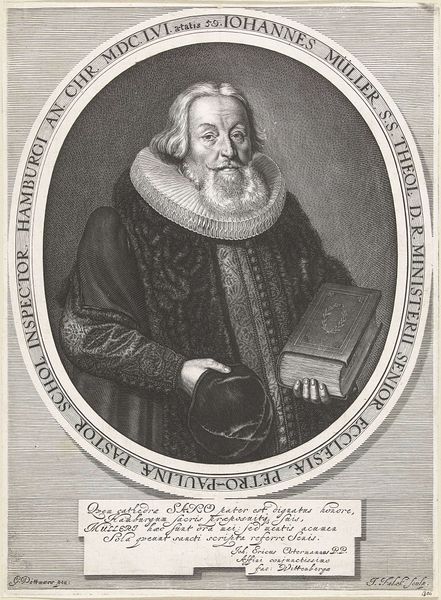
print, engraving
#
portrait
#
baroque
#
dutch-golden-age
# print
#
figuration
#
portrait reference
#
line
#
academic-art
#
engraving
Dimensions: height 289 mm, width 201 mm
Copyright: Rijks Museum: Open Domain
This print of Cornelis Simonis Kluverius was made by Theodor Matham in the 17th century, using engraving techniques. Look closely, and you’ll see it’s made entirely of lines, cut into a copper plate with a tool called a burin, then inked and printed onto paper. Engraving demands careful planning and immense skill. Each line must be precisely placed to create the illusion of light, shadow, and form. Engravings like this were a vital means of communication and documentation in a pre-photographic age. They allowed portraits and other images to be reproduced and distributed widely, playing a crucial role in shaping public perception and preserving likenesses. The labor-intensive process reflects the value placed on accurate representation and the desire to commemorate individuals. Considering the amount of work involved in creating this print, it prompts us to reflect on the social context of artistic production and the role of skilled craftsmanship in early modern Europe.
Comments
No comments
Be the first to comment and join the conversation on the ultimate creative platform.
